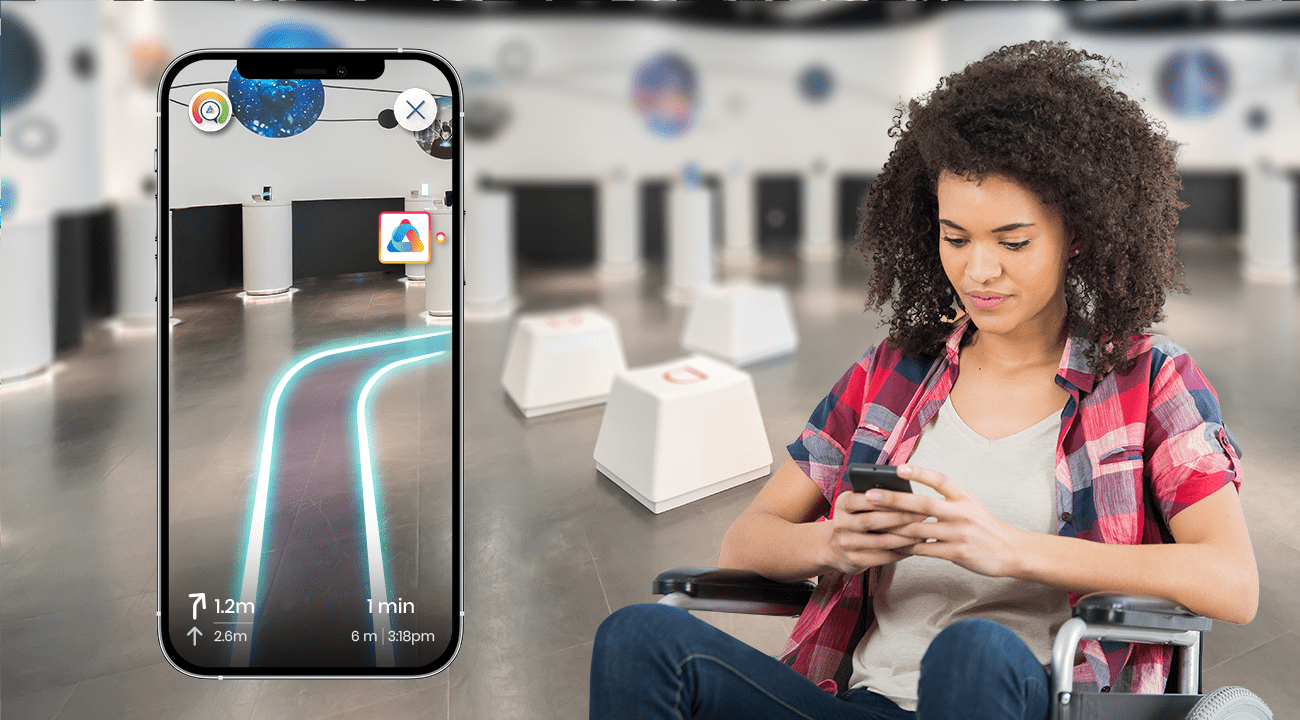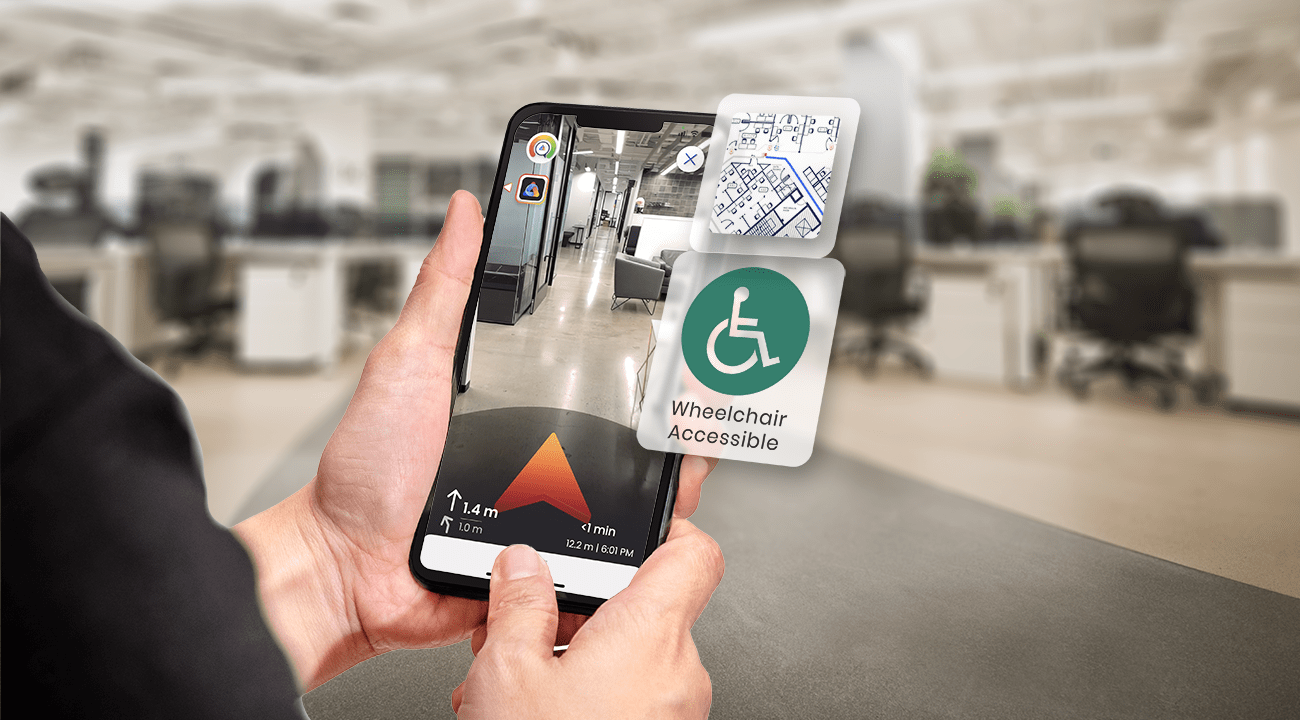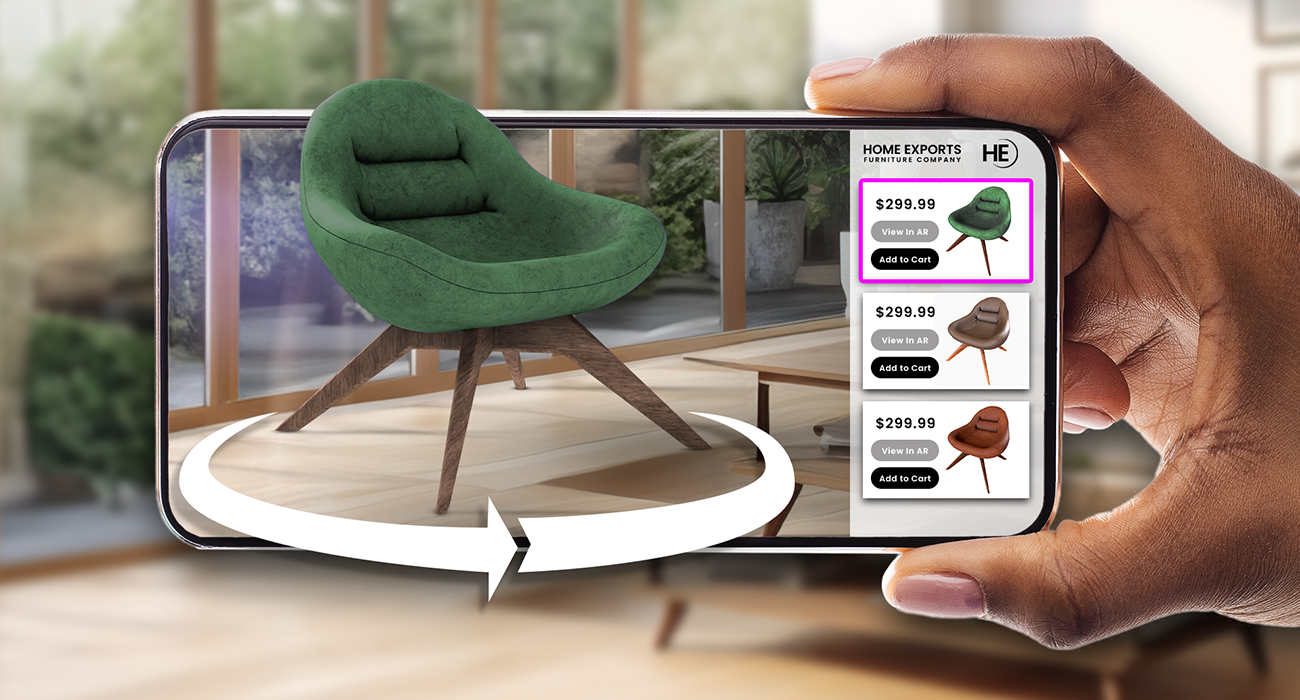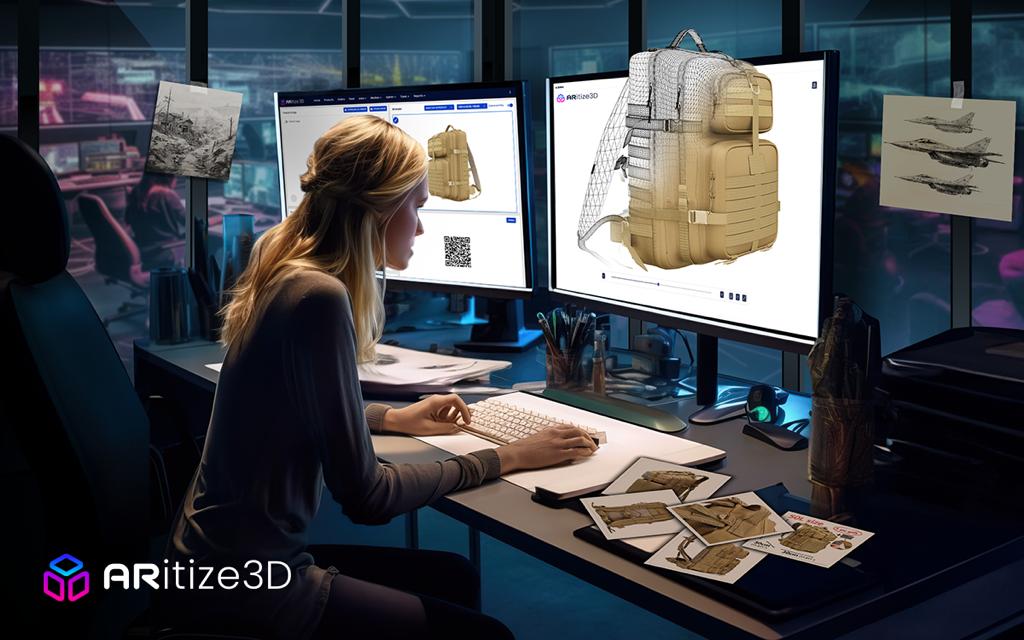In today's fast-paced world, technology has become an indispensable part of our lives, aiding us in various tasks. While outdoor navigation systems have long been available, indoor navigation has emerged as a revolutionary concept, particularly for individuals with accessibility needs. This blog explores the significance of indoor navigation for accessibility and its transformative impact on people's lives.
Importance of Indoor Navigation for Individuals with Accessibility Needs
Large and complex venues pose significant challenges for individuals with accessibility needs when it comes to navigation. These venues, such as shopping malls, airports and hospitals, often consist of intricate layouts and multiple levels, making it difficult for individuals to find their way around.
According to the World Health Organization, an estimated 1.3 billion people experience significant disability. Individuals with mobility impairments may struggle with long walking distances or inaccessible pathways, while those with visual impairments face difficulties in identifying landmarks or reading signs. Moreover, crowded environments and unfamiliar surroundings can further exacerbate the navigation difficulties for individuals with cognitive or sensory disabilities. The complexity of these venues often hinders their ability to move independently and hampers their overall accessibility and inclusion within such spaces.

Indoor wayfinding and navigation systems offer a lifeline to such individuals by providing them with tailored assistance and accessible guidance. It empowers them to navigate their surroundings with greater ease and independence. Let us understand how in detail below.
Impact of Indoor Navigation on Accessibility
-
Improves Accessibility in Public Spaces:
Public spaces should be inclusive and accessible to everyone, regardless of their abilities. Indoor navigation systems contribute significantly to achieving this goal by breaking down physical barriers and providing equitable access to all. By offering detailed maps, audio instructions and haptic feedback, these systems cater to a diverse range of disabilities, including visual impairments, hearing impairments, cognitive impairments and mobility challenges. Moreover, they provide personalized routes based on individual preferences or specific accessibility needs, ensuring that everyone can move around efficiently and comfortably. -
Assists in Meeting Regulatory Compliance:
By providing accessible navigation options like audio instructions, haptic feedback and personalized routes, indoor navigation systems ensure compliance with accessibility regulations. Some examples of these regulatory compliances include ADA (Americans with Disabilities Act) and WCAG (Web Content Accessibility Guidelines), ACA (Accessible Canada Act) and other accessibility standards. These systems enable venues to offer equitable access to individuals with disabilities, avoiding potential legal issues and penalties. -
Promotes Independence:
By providing step-by-step directions and real-time information, these indoor wayfinding solutions empower people to navigate through spaces confidently and independently. It enables them to locate points of interest, such as restrooms, elevators, emergency exits and designated accessible routes, without relying on assistance from others. This newfound independence fosters a sense of autonomy, allowing individuals to explore public spaces at their own pace, engage in social activities and fulfill their daily needs without feeling limited by their disabilities. -
Enhances Safety and Security:
Last but not least, indoor navigation systems also play a crucial role in ensuring the safety and security of individuals with disabilities. By integrating with building management systems, they can provide real-time updates on potential hazards such as temporary closures, maintenance activities or crowded areas, allowing individuals to plan their routes accordingly. This information empowers users to make informed decisions, reducing their vulnerability to a great extent. Additionally, these systems can assist security personnel in locating individuals quickly and efficiently, enabling prompt assistance if needed.
To learn how AI is revolutionizing customer experiences in the retail industry, read this.
Conclusion
By embracing and investing in indoor wayfinding and navigation systems, we can create a more inclusive society where individuals with disabilities are empowered to participate fully, contribute their talents and lead fulfilling lives.
About ARway.ai by Nextech3D.ai
Augmented Reality Experience Platform
ARway.ai is a powerful, no-code spatial computing platform that melds the real and the virtual into a single seamless experience. One of its powerful features includes navigation and wayfinding that facilitates the creation of robust AR navigation with accurate positioning, digital directory, turn-by-turn and optimized routes. To learn more about this advanced indoor navigation solution, click here.







